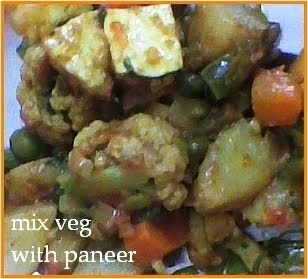Fresh Vegetable Recipes Biography
In culinary terms, a vegetable is an edible plant or its part, intended for cooking or eating raw.[1]The non-biological definition of a vegetable is largely based on culinary and cultural tradition. Apart from vegetables, other main types of plant food are fruits, grains and nuts. Vegetables are most often consumed as salads or cooked in savory or salty dishes, while culinary fruits are usually sweet and used for desserts, but it is not the universal rule.[1] Therefore, the division is somewhat arbitrary, based on cultural views. For example, some people consider mushrooms to be vegetables even though they are not biologically plants,[2][3] while others consider them a separate food category;[4] some cultures group potatoes with cereal products such as noodles or rice,[5] while most English speakers would consider them vegetables.
Some vegetables can be consumed raw, while some, such as cassava, must be cooked to destroy certain natural toxins or microbes in order to be edible. A number of processed food items available on the market contain vegetable ingredients and can be referred to as "vegetable derived" products. These products may or may not maintain the nutritional integrity of the vegetable used to produce them.
The word vegetable was first recorded in English in the early 15th century from Old French,[6] and was in origin applied to any plant. This is still the sense of the adjective "vegetable" in biological context.[7] The word is taken from Medieval Latin vegetabilis "growing, flourishing" (i.e. of a plant), a semantic change from a Late Latin meaning "to be enlivening, quickening", a derivation of the verb vegetare "enliven", which is derived from vegetus "to be alive, active" (related to vigor), in reference to the process of a plant growing.
In 1767, the meaning of the term "vegetable" was specified to mean "plant cultivated for food, edible herb or root." The year 1955 noted the first use of the shortened, slang term "veggie".[6] As an adjective, the word vegetable is used in scientific and technical contexts with a different and much broader meaning, namely of "related to plants" in general, edible or not — as in vegetable matter, vegetable kingdom, vegetable origin, etc.[7] The meaning of "vegetable" as "plant grown for food" was not established until the 18th century.[8]
The green color of leaf vegetables is due to the presence of the green pigment chlorophyll. Chlorophyll is affected by the pH, and it changes to olive green in acid conditions, and to bright green in alkaline conditions. Some of the acids are released in steam during cooking, particularly if cooked without a cover.
The yellow/orange colors of fruits and vegetables are due to the presence of carotenoids, which are also affected by normal cooking processes or changes in pH.
The red/blue coloring of some fruits and vegetables (e.g., blackberries and red cabbage) aredue to anthocyanins, which are sensitive to changes in pH. When the pH is neutral, the pigments are purple, when acidic, red, and when alkaline, blue. These pigments are quite water-soluble. This property can be used in rudimentary testing of pH.
Some vegetables can be consumed raw, while some, such as cassava, must be cooked to destroy certain natural toxins or microbes in order to be edible. A number of processed food items available on the market contain vegetable ingredients and can be referred to as "vegetable derived" products. These products may or may not maintain the nutritional integrity of the vegetable used to produce them.
The word vegetable was first recorded in English in the early 15th century from Old French,[6] and was in origin applied to any plant. This is still the sense of the adjective "vegetable" in biological context.[7] The word is taken from Medieval Latin vegetabilis "growing, flourishing" (i.e. of a plant), a semantic change from a Late Latin meaning "to be enlivening, quickening", a derivation of the verb vegetare "enliven", which is derived from vegetus "to be alive, active" (related to vigor), in reference to the process of a plant growing.
In 1767, the meaning of the term "vegetable" was specified to mean "plant cultivated for food, edible herb or root." The year 1955 noted the first use of the shortened, slang term "veggie".[6] As an adjective, the word vegetable is used in scientific and technical contexts with a different and much broader meaning, namely of "related to plants" in general, edible or not — as in vegetable matter, vegetable kingdom, vegetable origin, etc.[7] The meaning of "vegetable" as "plant grown for food" was not established until the 18th century.[8]
The green color of leaf vegetables is due to the presence of the green pigment chlorophyll. Chlorophyll is affected by the pH, and it changes to olive green in acid conditions, and to bright green in alkaline conditions. Some of the acids are released in steam during cooking, particularly if cooked without a cover.
The yellow/orange colors of fruits and vegetables are due to the presence of carotenoids, which are also affected by normal cooking processes or changes in pH.
The red/blue coloring of some fruits and vegetables (e.g., blackberries and red cabbage) aredue to anthocyanins, which are sensitive to changes in pH. When the pH is neutral, the pigments are purple, when acidic, red, and when alkaline, blue. These pigments are quite water-soluble. This property can be used in rudimentary testing of pH.






